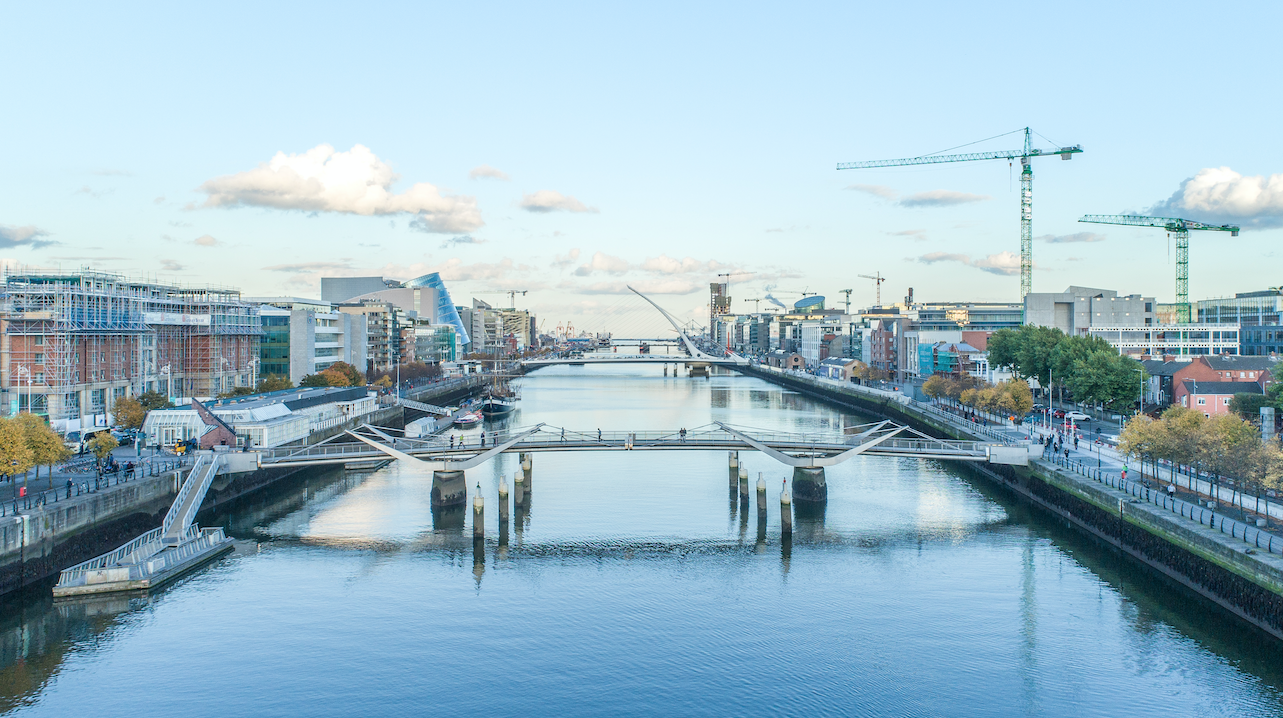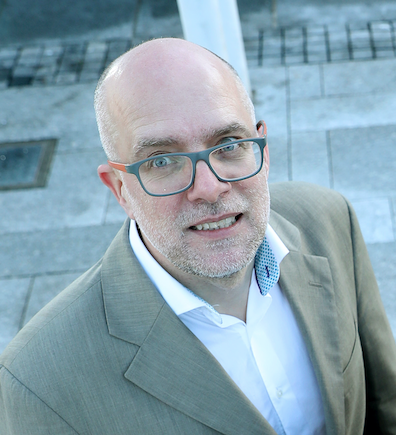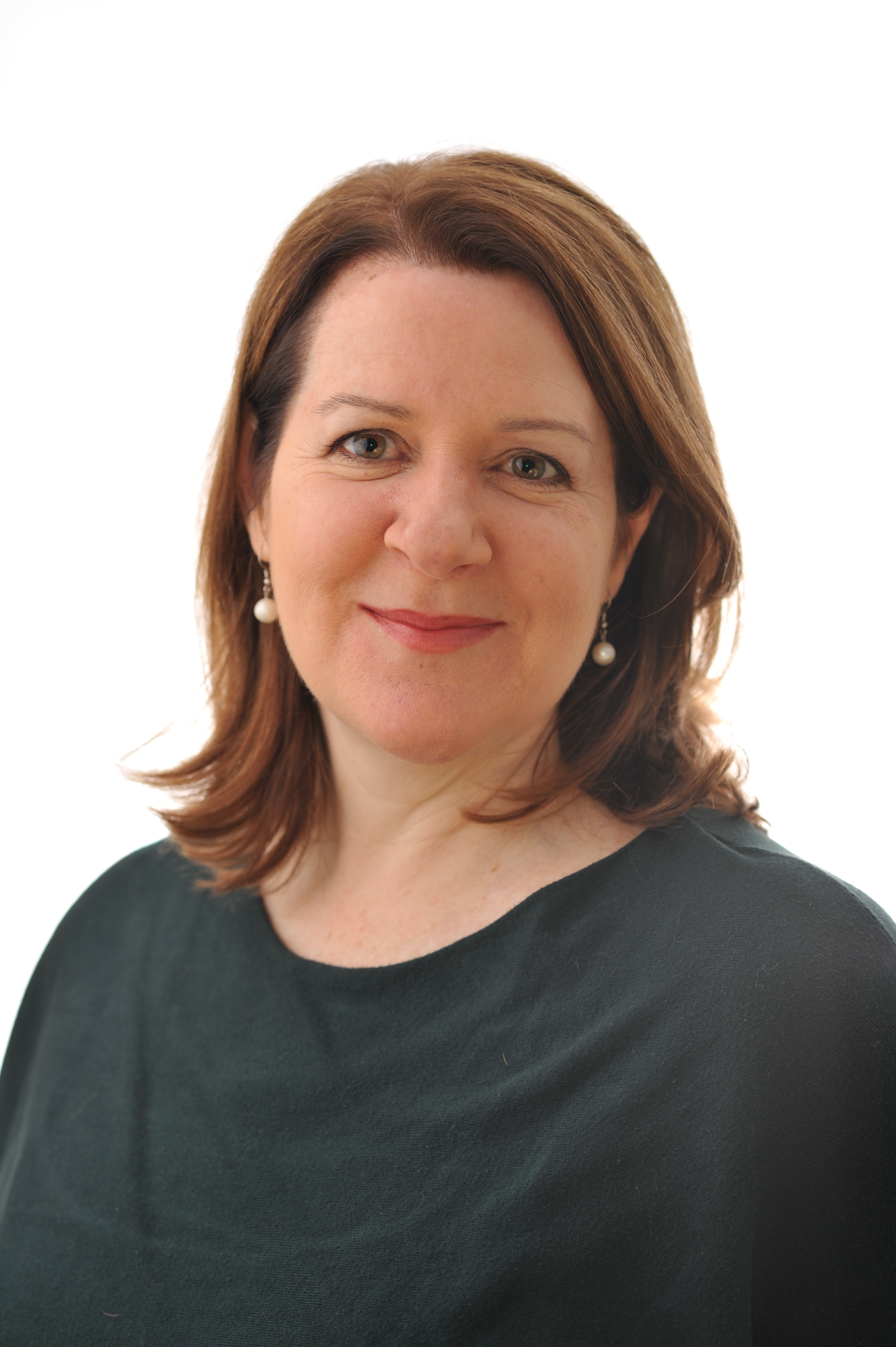
Photo: Screenshot-2019-04-17-at-09.46.57
Dublin’s Docklands becomes a centre for innovation
17 April 2019
by Jonathan Andrews
Jonathan Andrews reports from Dublin on how the Irish capital’s Smart Docklands initiative is not only attracting big and small tech companies but also benefitting citizens as the city becomes a partner in creating solutions
John Coolican has ridden the five-kilometre route to his Dublin office in the Docklands, east of the city, many times in the past. The bike journey takes him through narrow suburban roads, a pleasant stretch along the River Liffey, and then along the route of a defined cycle lane.
What makes his commute different is that he has been part of an experiment to capture data from his daily journey to benefit other residents and cyclists. In 2017, he started using a new bike light that not only reacted according to the prevailing conditions but also built a record of every trip, capturing useful data.
Coolican, who works for consulting firm Accenture in an innovation lab in the docklands, was one of 500 people that undertook a trial of the See.Sense light at the end of 2017 in conjunction with Dublin City Council.
“We knew that this company had a very interesting light that not only had the ability to record data but also to be a reactive light where cars coming from behind would be warned of their proximity to the bike as flashing would increase,” says Coolican.

Irene McAleese, Co-Founder and Chief Strategy Officer of See.Sense was looking to work with a city through a closed trial before the product was launched to retail customers. She knew that if she could aggregate all the data– including braking points, dwell time at lights, effect of road surfaces and other factors–it would produce something very novel for cities.
“We [viewed it] as an intelligent light but we were aware that there was this other huge opportunity from the technology,” she says. “What we needed at the time was a way to work with a city at scale and have the opportunity to deploy it.”
McAleese’s search took her into discussions with Dublin City Council which was was looking for a way that technology could help improve conditions for cyclists with the ultimate aim of getting more people cycling. And with a group of workers commuting to the city’s new innovation district–known as Smart Docklands–she had the ideal guinea pigs to trial her own invention.
From nothing to something
Smart Docklands didn’t just happen overnight. The area had become run down over many years until the Irish Financial Services Regulatory Authority moved in in the late 1980s, and was followed cautiously by other companies in the 1990s.
“I lived just around the corner, and it was a bit of a no-go, not-much-to-do kind of area,” recalls Paddy Flynn, Director of Geo Data Operations at Google. “It was only by the early 2000s that a major regeneration began.”
When Flynn’s own employer–a relatively small company at the time–chose the area to set up their headquarters in 2003, others including Facebook followed.
“There was a regeneration plan anyway,” he adds. “Whether it coincided with companies like Google and Facebook coming along or not, I think that would have been a catalyst or a support to develop it further.”
The area soon earned the nickname ‘the Silicon Docks’ as other tech companies and start-ups–many of which have their European headquarters in the docklands–established themselves in the area. But as Jamie Cudden, Smart City Programme Manager, Dublin City Council says, there was nobody navigating or playing a broker role at the centre.
“We were starting to develop our wider smart Dublin programme and we were conscious of the fact that we had this special district that was being fast-tracked for development,” recalls Cudden. “The city had a strong presence helping to fast-track that development through our office and the timing was right to concentrate in that district.”

Although officially launched in February 2018, the road to becoming the Smart Docklands testbed was developed over several years and was born from a variety of initiatives. Beginning with the EU’s URBACT Smart Impact project, Cudden won nearly €70,000 in funding to build out the smart district concept with CONNECT research group at Trinity College Dublin.
“[The funding] was small in terms of capacity but at the same time we were able to build into the research opportunities, and to co-invest to hire a programme manager,” says Cudden. “The rest just flowed and took off as we built the network. It’s growing at its own speed now with the support of the city.”
Key areas of focus for the smart district include mobility, environment, buildings, and infrastructure. Deciding which projects and pilots to be deployed begins with stakeholder engagement workshops, followed by a “prioritisation funnel”. City challenges are identified first and with the city government at the heart of this initiative, companies could now talk to each other about what they might achieve in partnership.
“Dublin City Council was the kind of fulcrum for the focus of what we could do,” says Flynn, who was pivotal in the early stages due to his role at Google. “It meant that companies could now talk to each other and Dublin City Council could have individual relationships.”
Covering just three square kilometres, the Smart Docklands is now home to 500 businesses, 44,000 employees and 26,000 residents. The city, together with CONNECT research group for future networks and connectivity, has invested over €1 million over three years which has piggy backed on top of regeneration and investment that is being attracted to the district (circa €3 billion of new investment by 2020). Big companies that make up the Smart Docklands network include Vodafone, IBM, Facebook, Google, Accenture and Softbank.
Start-ups, like See.Sense, are an essential component to the ecosystem. Google’s Flynn still plays an active role in helping join the dots and works closely with the district’s start-up hub, Dogpatch Labs.
Smart Docklands is a breeding ground for companies to diversify and push their core competences into new areas. Danalto, which had previously worked in the docklands to test IoT flood risk management devices and gully water flow, has now employed its technology to improve transport safety.
David MacDonald, Co-Founder and CEO of Danalto, worked with Irish Rail using IoT to detect when a vehicle strikes a bridge or other rail infrastructure. As trains run through the Docklands, it was the obvious place to test the technology before rolling it out across Irish Rail’s network.
“Cars, lorries, or vans can strike the bridges and then the trains have to stop until the damage is assessed, and surveyed,” he says. “We were able to test solutions in the docklands around reducing and mitigating the threat of a lorry striking a bridge due to being overloaded.”
Being surrounded by innovative companies has helped MacDonald to develop his company’s solutions. He was able for example to connect with DenseAir, a wholesale provider of shared ‘neutral host’ 4G and 5G mobile densification networks.

“Smart Docklands is all about the density that really drives the innovation,” he says. “What you get is 100 key decision makers that come together and are able to provide technology for different uses.”
The big tech companies are keen to participate in the docklands for those very reasons. Gavin Shorten from IBM’s Innovation Exchange points out that while IBM has a lot of great tech people and “thinkers”, it is by opening up to an ecosystem that one can really understand what the market and social need is.
“Smart Docklands is a perfect example of like-minded people and companies that are trying to make the city work for them, and make the companies work for the city, to make it a better place to live,” he says.
The company collaborated with Smart Docklands’ partners to build a bicycle flow-forecasting model to help the city plan for shared-bike station locations. It can also be used to identify the most popular pathways into the city, helping the city prioritise infrastructure and maintenance.
“Using completely anonymised and aggregated data, as well as specific weather patterns around Dublin, enabled us to not only measure the flow of people but to understand the reason for changes in the flow,” explains Shorten. “And this being Dublin, weather has a huge impact on that.”
Shorten adds that from this proof of concept, Dublin City Council has showcased key components at conferences and has been able to garner some insights from which the city will actuate.
Building the brand, or storytelling, is one of the six steps outlined to promote the Smart Docklands district. This then has the wider potential to lock into the greater Smart Dublin programme through use cases coming out of the docklands’ ecosystem.
“When smart city tech becomes a bit more real and people can touch it and feel it and understand what the impact is, that helps,” says Cudden. “We want to use this opportunity not just for the sake of technology that looks cool but how we can create that connection back to the people to deliver services that are solving problems in the city.”
That connection back to the people has helped McAleese from See.Sense generate word-of-mouth praise for her product, which led it to become British Cycling’s official bike light supplier. The company will now expand and extend previous pilots in Dublin and Manchester and take on a new pilot in Antwerp as part of the EU large scale IoT pilot, SynchroniCity.

“You can’t just have good technology, it’s got to be about citizen engagement and people helping to co-create that,” says McAleese. “You need innovative business models that involve partnerships and collaboration, and that is the big opportunity we have been able to draw from Dublin.”
Co-creating is paramount, says Cudden. He believes that if cities aren’t at the forefront of some of these developments there is the risk they might develop in the wrong direction with e-scooters being one example.
“It is happening in our cities whether we like it or not, so let’s be a part of that,” adds Cudden. “The [Smart Docklands] district can help make that case quicker and can help build out awareness, create new opportunities and be at the top of this space.”
Accenture’s Coolican is full of praise not only for his bike light but also for his employer’s choice of location.
“It was a trial that came on the radar screen of the folks here in an innovation lab and it is the sort of environment where we are looking at a whole lot of new technologies and was something that people internally had a big appetite for,” he says. “It would be great to see a wider trial and bigger data because it is a win for traffic, a win for sustainability and a win from a health point of view.”
Smart Docklands success stories
Smart mobility
See.Sense has led a connected bike light pilot engaging with key Docklands employers (500 participants provided five months’ data on cycling across Dublin).
Smart environment
Pervasive Nation has deployed low-cost flood sensors using LoRaWan rainfall sensors and SIGFOX river level monitors.
Smart infrastructure
Connectivity pilots are underway, including partnerships with Vodafone on NB-IOT, DenseAir on pervasive connectivity and future 5G potential. Bigbelly bins will deploy 100 bins-as-a-service two-year pilot to learn about the types of use cases that can be deployed where there is a dense network of smart connected devices across a city district. The city will also create an innovation platform for entrepreneurs to pilot and deploy new solutions and concepts based on the infrastructure.
Smart buildings
Accenture’s The Dock, “one of the world’s most connected buildings”, the CHQ building with smart retail and others. High concentration of WiredScore certified connected buildings.
Smart people
People Movement Modelling related to events and infrastructure planning in Docklands with ThinkSmarter. Piloting pavement accessibility navigation app for Docklands with Route4U.
Smart economy
Dogpatch Labs is a start-up co-working space alongside the Google for Entrepreneurs hub.








